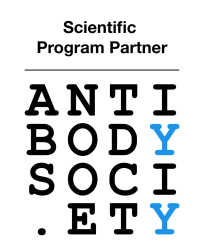The Antibody Society aims to support individuals and organisations involved in antibody research and development, focusing on business intelligence and educational research projects. Silvia Crescioli, Business Intelligence Creator, The Antibody Society kicked off her presentation by outlining her inclusion and exclusion criteria for antibody therapeutics: “We consider an antibody therapeutic as a recombinant protein-based molecule, which has at least one antigen binding site that is derived from an antibody gene and it evaluated as a therapeutic.” The definition excludes all polyclonal antibodies from a natural source, antibody encoding DNA, and FC proteins.
In the past few years, the number of antibody-drug conjugates (ADCs) granted first approvals has increased. This pattern has been observed across monospecific antibodies, ADCs, bispecific and multi-specific antibodies, and immunoconjugates. Furthermore, from 2010 onwards, there has been a consistent increase in the number of ADCs entering clinical studies.
Crescioli measured the phase transition rate across several ADCs. She discovered that the approval success rate of ADCs was around 20%, whereas, for bispecific antibodies or naked monospecific antibodies, it is 30%. She attributed the lower success rate of ADCs to the fact that this analysis only considered antibodies entering first in human studies between 2000 and 2019, and the sample grouped several generations of ADCs.
Therefore, Crescioli recalculated the success rate by just focusing on ADCs and stratifying them depending on when they enter clinical studies. The groups were divided into groups from 2000 to 2015 and those entering from 2016 to 2019. The success rate of the latter group was much higher.
To dig deeper, Crescioli investigated success rates by the payload of specific ADCs. The results showed that ADCs with topoisomerase I inhibitors as payloads have shown higher phase transition rates compared to those with tubulin inhibitors or DNA-binding agents.
Moving to the type and frequency of targets in ADCs in early and late-stage clinical studies, there are four frequent targets that appear in both stages: HER2, Claudin 18.2, TROP-2, and B7-H3. The most frequent targets of ADCs currently in clinical studies are TROP-2, Claudin – 18.2, and HER2 and there is an emerging trend of bispecific ADCs entering clinical studies.
Next, Crescioli addressed the noticeable growth in unconventional ADCs entering clinical studies. Crescioli defined unconventional antibodies as ADCs which are conjugated to non-cytotoxic, disease-relevant molecules. These antibodies are being designed for a range of indications including cancer, muscular disease, inflammatory disorders, and infectious disease. Although the number of clinical studies with unconventional antibodies is relatively small, these preliminary findings could point to a future where unconventional ADCs display therapeutic potential.


